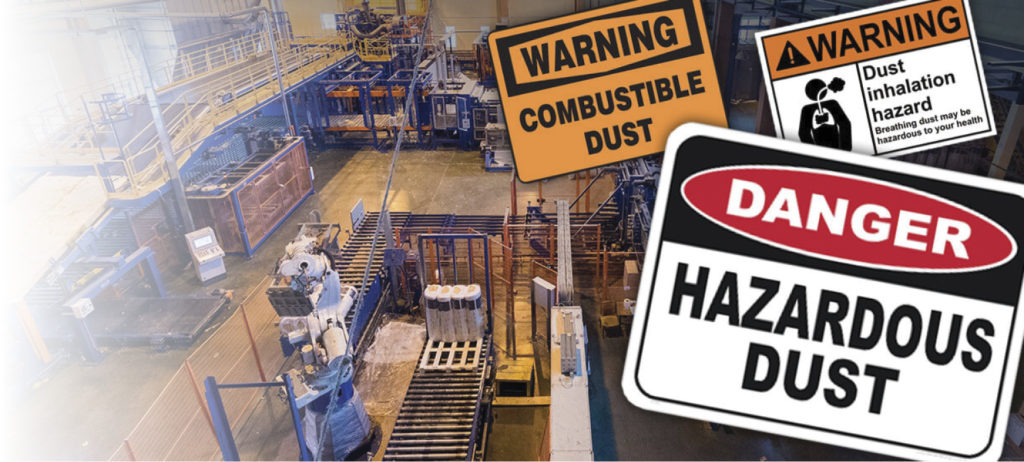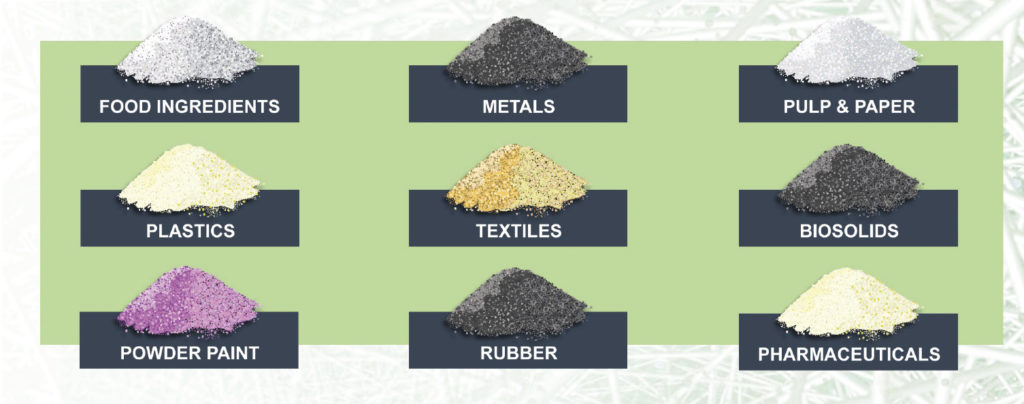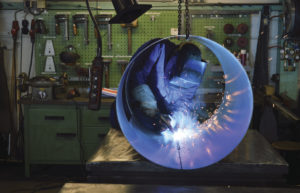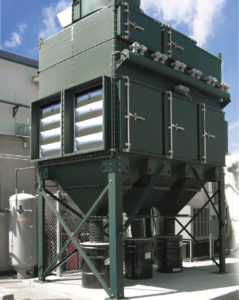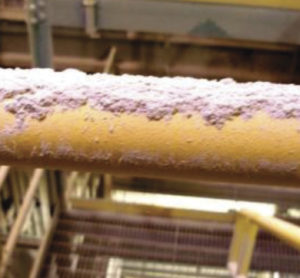Identify Combustible Dust Risks Lurking at Your Facility
By: Andy Thomason, Contributor
Many manufacturing and processing operations generate dust particles that can ignite and cause a fire or explosion. Combustible dusts include food ingredients, seed and grain, metals, paper, pulp, plastics, textiles, biosolids, wood, rubber, dyes, pharmaceuticals and pesticides.
Because each plant, factory and facility is different, identifying and understanding unique combustible dust risks is necessary to design and implement an effective safety strategy. Here are a few considerations to help you determine your combustible dust risks.
Understand What Triggers a Dust Explosion
A dust explosion occurs when oxygen, heat (ignition source), fuel (combustible dust), dispersion of dust particles and confinement come together. A primary explosion is the first point where an explosion occurs and is often an isolated incident.
A secondary explosion occurs when the primary explosion pressure disturbs dust that has collected in the workplace, resulting in a much more extensive explosion. Rapid combustion resulting from this combination of factors is known as a deflagration. Think of it as an expanding ball of flame that is rapidly consuming a cloud of dust. If the event is confined by an enclosure, the resulting pressure rise may cause an explosion.
Determine if Dust is Combustible
To determine whether the dust is combustible, you need to have explosibility testing done, in accordance with ASTM test methods, as stipulated by the National Fire Protection Association (NFPA). Unless the dust is completely inert (Kst = 0), you must incorporate explosion protection into the dust collection plan. This dust testing will tell you if your dust has a Kst and Pmax value; how much pressure an explosion will generate; and how fast the explosion will travel.
The NFPA requires owners of facilities that engage in dust-producing activities to conduct a combustible dust hazard analysis (DHA) to assess risk and determine the necessary fire and explosion protection. You can conduct the analysis internally or use an independent consultant. Whichever you chose, the authorities having jurisdiction will review the findings and grant approval. These can include federal, local or state inspection or fire officials, and your insurance company.
Identify Potential Ignition Sources
Because ignition is one of the ingredients for a dust explosion, you want to identify heat sources near areas where dust could be present. Look for potential ignition sources, like friction heat on surrounding equipment, open flames, smoking, sparks, static electricity, and malfunctioning wiring or electrical equipment.
Clean Dust Properly
Do not attempt to remove dust by using compressed air, air wands or brooms. These methods will disperse the particles into the air, allowing them to settle again on surfaces at your facility and remain an explosion hazard. A high-efficiency dust collector, equipped with full explosion protection designed specifically for your application, is an accepted and proven engineering control that will filter hazardous contaminants and combustible dusts to make indoor environments safer.
Take a Look Around
A simple, yet effective way to identify possible combustible dust danger is to look around the facility. Train personnel to regularly check obvious areas for dust accumulation, such as equipment and floors. Also check any hidden areas where dust may build up—i.e., inside ductwork and on ceiling joists. Dust thickness of 1/32 of an inch, about the thickness of a dime, is a warning sign that the accumulating dust is becoming a potential explosion or fire hazard. Keep in mind that the smaller the dust particle size, the greater the danger or volatility of the explosion.
Implement Dust Safety Measures
A dedicated dust management program must include employee education that includes training equipment operators, maintenance personnel and other workers in dust hazard awareness, and job-specific safeguards. In addition to the dust hazard analysis mentioned above, safety measures should include:
- A detailed program to deal with combustible dust hazards in the facility
- A defined process on how to execute and manage the changes required to meet the life-safety goals set in place by the combustible dust program
- A process hazard analysis, which OSHA requires on each process point generating dust
-
A plan specifying how you will remove the dust hazard from each process
- A housekeeping strategy outlining cleaning processes to keep combustible dust from becoming a problem
- An ongoing maintenance and inspection plan to keep equipment operating properly, inspected and in compliance
Add It All Up
Dust control is one of the most difficult challenges in industrial manufacturing and processing. Keys to managing combustible dust include implementing the proper controls and procedures, as well as educating personnel to recognize and address warning signs of a potential dust explosion. Regular housekeeping and operating a dust collection system that is designed for your specific operation can significantly reduce airborne dust in the work environment and help to mitigate the risk of a primary or secondary explosion.
Andy Thomason is Senior Applications Specialist at Camfil Air Pollution Control (APC).
All images courtesy of Camfil
Share on Socials!
Heat Stress Guide for Employers
Best Practices for Effective Respirator Fit Testing in a Post-COVID World
Hearing Protector Fit-Testing: Hear to Stay
Leaders in Industrial Hygiene
Council for Accreditation in Occupational Hearing Conservation (CAOHC)
Subscribe!
Sign up to receive our industry publications for FREE!



